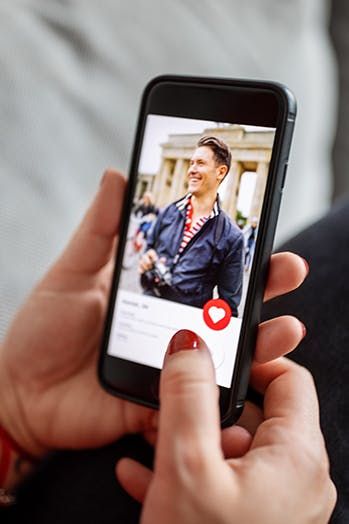
Modern businesses must stay afloat in the world of pop culture, as the competition for consumer attention is so intense that even Netflix considers sleep its main rival. To stand out among dozens and hundreds of competitors, a creative approach that seamlessly weaves into people's lives is needed. Ordinary advertising often goes unnoticed, but if it becomes part of an engaging story or emotionally involves the audience, it has a chance for success. Even one such successful communication can significantly boost a brand's or product's recognition. Analyses show that this approach can lead to a recognition increase of up to 43%.
In October 2020, Netflix released the series *The Queen’s Gambit*, centered on the fictional chess prodigy Elizabeth Harmon. Within the first month, over 62 million households had watched it. Impressive statistics, but the show’s impact didn’t stop there. Inspired by the series, people began buying chess sets. In October, sales of chess sets tripled, and by November, they had increased more than elevenfold, according to Goliath Games, one of America’s largest toy manufacturers. Like other companies selling chess sets, they didn’t orchestrate this success—they were simply very fortunate. The surge in demand was so significant that The New York Times even published instructions on how to create an origami chess set at home.
Online services also saw a massive uptick. The app for the world’s largest chess community, Chess.com, ranked third in the U.S. App Store in November. According to Bloomberg, over 2 million new users registered on the site that month, an all-time record. Twitch channels experienced a popularity boost as well—chess streamer Levy Rozman’s channel grew from 70,000 to 500,000 daily views. It turned out that one of the oldest games and streaming could get along quite well. But even this doesn’t fully capture the extent of the show’s impact. *The Queen’s Gambit* also helped attract more girls to the game—if about 22% of newcomers on Chess.com were girls before the show’s release, their share increased to 27% afterward.
The chess industry owes a great deal of gratitude to the show’s creator, Scott Frank. His project did more to promote the game than many years and millions spent on traditional marketing. The series independently created a new blue ocean, benefiting many businesses. However, not everyone needs to wait for Netflix hits.
In many cases, a quality product loved by millions is enough. Among the fans, there might be media personalities. For example, the name of the mobile game developer Playrix recently made waves. Their most famous project is the match-three game *Homescapes*, featuring a butler named Austin. In February, a song and music video about him appeared on Zemfira’s first album in eight years. The singer assures that the integration was initially voluntary, and the collaboration with Playrix started later. As a result, Playrix assigned 80 people to work on the video. It’s hard to quantify the economic impact on the company—they are already the second-largest mobile game publisher globally, with a capitalization of over $7 billion. But getting extensive media coverage for free and expanding their fan base is any business’s dream.
Given the significant impact of direct mentions, some brands approach product placement in pop culture with obsessive precision. For instance, Apple prohibits filmmakers from showing its products in the hands of villains and strictly adheres to this rule in its own productions. So, if you want to identify the anti-hero, try to check their phone. The first to point this out was Rian Johnson, the director of the mystery film *Knives Out*. I hope this doesn’t spoil your viewing experience.
However, the influence extends beyond plot twists. Sometimes, integrations are far more influential and last for decades. Remember the self-lacing shoes worn by Marty McFly in *Back to the Future*? Naturally, Nike capitalized on its association with one of the biggest cinematic phenomena of modern history. In 2011 and 2016, the company re-released the Nike MAG model with the same design and self-lacing technology. Both releases were highly limited, and the money raised (over $6 million) went to fund Parkinson’s disease research—an illness affecting Michael J. Fox, the actor who played Marty. This is a great example of how to pay homage to a legendary film, do a good deed, and attract the attention of geeks worldwide.
Drawing attention to an issue is a side effect of any well-told story. This is particularly well understood in filmmaking. Another illustrative example is a recent hit from Channel 4—*It’s a Sin*, an LGBT drama that honestly and openly depicts the realities of the AIDS epidemic in 1980s London. People with AIDS faced severe stigma from both the general public and the media, and there was no effective therapy available. Many succumbed to the disease within a few years. What impact did the show have on today’s viewers? In the UK, the number of HIV/AIDS tests taken skyrocketed— the Terrence Higgins Trust charity reported that if the previous record was 2,800 tests ordered, after the show’s release, the number tripled.
Of course, much more often, the synthesis of film storytelling and branding yields commercial results. Viewers might not always consciously think about this, but film producers and marketing executives of major companies certainly do. Some media franchises are so influential that they set their own terms. For instance, the James Bond films sell about 30 advertising integrations. Everything is decided in advance—what beer agent 007 drinks (Heineken) and which watch he wears (Omega for the last 25 years). The “beer” contract alone brings in $45 million per installment.
There are also less pragmatic examples. Remember what they drink in the *Fast & Furious* franchise? The undisputed leader among the racers is Corona Extra. Surprisingly, the company doesn’t pay a cent for the integration. The film’s producers simply believe that this brand best represents their characters. According to Apex Marketing Group, the real value of such product placement for Corona could be around $15 million. Instead, the strong image does all the work.
The ability to appeal not only to the wallet but also to the heart is what sets truly strong brands apart. They can withstand economic crises and changes in consumer habits and sometimes even create these changes themselves. More importantly, such synergy can change the world for the better: creating charitable initiatives, raising awareness about social issues, and helping those in need of support. This effect isn’t always measurable financially, but it definitely makes a difference for consumers. Every successful pop culture story is a chance for a brand to get closer to people. Let’s see who will be next to take advantage of this.



